Pseudoperonospora cubensis
Downy mildew causes angular, yellow to brown lesions on top of the leaves that are restricted by leaf veins. When conditions are favorable, for example early in the morning when moisture is higher, lesions observed on the underside of the leaf may be covered in dark “down”. This downy growth is masses of pathogen spores called sporangia, which can be seen in the field with a 20X hand lens. In the presence of water sporangia can directly germinate or differentiate into swimming zoospores that infect leaves. Identification of downy mildew in cucumber can generally be done in a field setting due to the characteristic angular lesions and pathogen sporulation in the underside of the leaf. However, in crops such as watermelon and cantaloupe where lesions do not always have the characteristic angular shape, sporulation can be scarce and diagnostics can be more difficult.
Diagnostic Resources
- Melon Disease Key – Smart and McGrath Labs at Cornell Vegetables
- MyIPM for Vegetables – An App developed by the Southeastern Vegetable Extension Workers
- Plant Disease Clinics
APS Diagnostic Guide
- Diagnostic Guide for Cucurbit Downy Mildew
by: Andres Salcedo, Mary Hausbeck, Stacey Pigg, and Lina M. Quesada-Ocampo
Plant Health Progress: Vol. 21, No. 3
Plant Disease Management Reports
Disease Control Information
- Better Know a Pest: Downy Mildew of Cucurbits – Smart Lab at Cornell Vegetables (video)
- Cornell Cucurbit Downy Mildew Management Guidelines – Cornell Vegetables (2017)
- Downy Mildew News – Hausbeck Plant Pathology Research Lab at Michigan State University
Monitoreo y Manejo del Añublo Lanoso de las Cucurbitáceas – Spanish translation - Downy mildew on cucurbits: Early symptoms – McGrath Lab at Long Island Research and Extension Center, Cornell University
- Downy mildew on cucurbits: Other symptoms and imitators – McGrath Lab at Cornell Vegetables
- The Cucurbit Downy Mildew Forecast ipmPIPE -USDA NIFA (2007 – 2019)
- Resources for commercial growers: Downy Mildew – Smart Lab at Cornell Vegetables
- Vegetable Pathology Lab Factsheets – Quesada-Ocampo Lab at North Carolina State University
Cucurbit Downy Mildew – NC State Vegetable Pathology Factsheets
Añublo lanoso en cucurbitáceas – NC State Hoja informativa de patógenos de vegetales
Images of Downy mildew on Melon
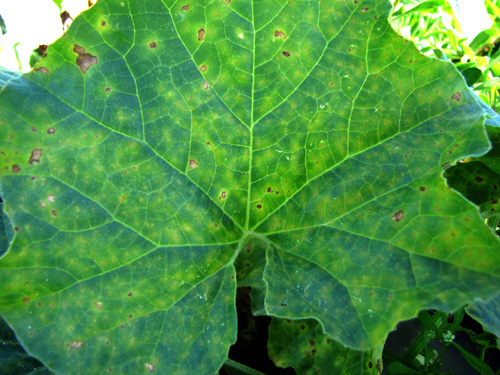
Figure 1. Initially spots are light yellow with a dark green border that appears water-soaked. The spots enlarge and become brown (necrotic). They are not angular like symptoms on cucumber and butternut squash. Image provided by Dr. Margaret McGrath, Vegetable Pathology, Cornell University.
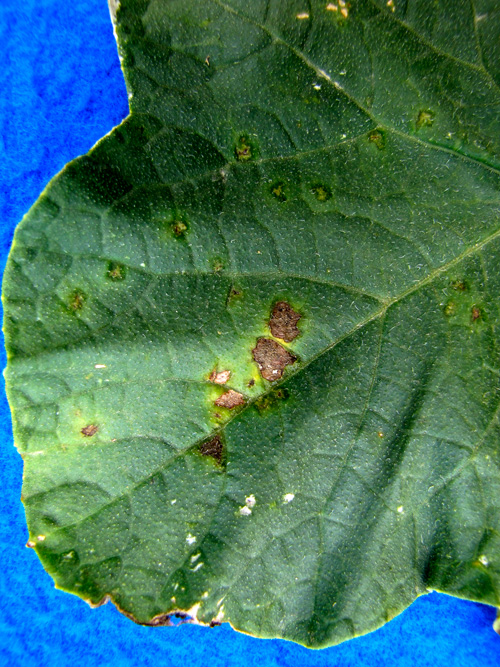
Figure 2. The spots enlarge and become brown (necrotic). They are not angular like symptoms on cucumber and butternut squash. Image provided by Dr. Margaret McGrath, Vegetable Pathology, Cornell University.
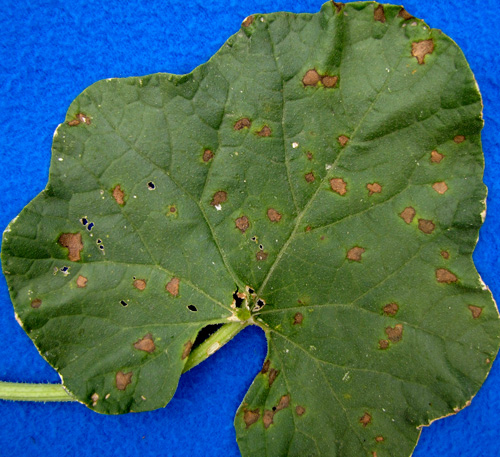
Figure 3. Initially spots are light yellow with a dark green border that appears water-soaked. The spots enlarge and become brown (necrotic). They are not angular like symptoms on cucumber and butternut squash. Image provided by Dr. Margaret McGrath, Vegetable Pathology, Cornell University.
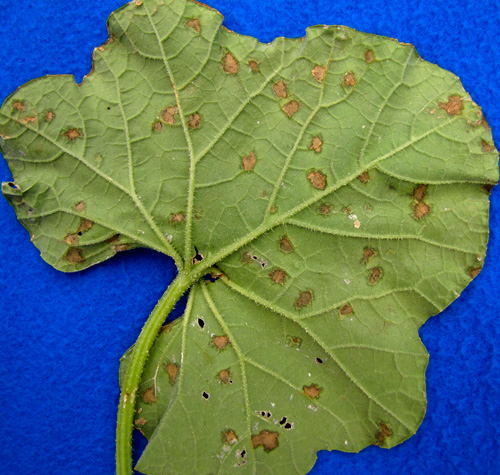
Figure 4. Upon close examination of some spots on the underside of leaves, it can be seen that major veins in the leaf form a barrier to expansion of downy mildew in this type of cucurbit as in others. Image provided by Dr. Margaret McGrath, Vegetable Pathology, Cornell University.
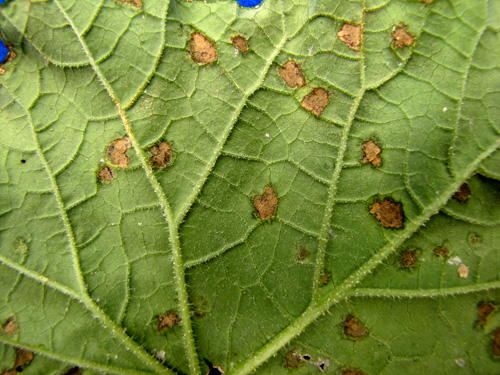
Figure 5. Upon close examination of some spots on the underside of leaves, it can be seen that major veins in the leaf form a barrier to expansion of downy mildew in this type of cucurbit as in others. The downy mildew pathogen does not produce many spores on cantaloupe leaves, thus the dark fuzzy (downy) fungal growth that commonly occurs on the underside of spots on cucumber and butternut squash leaves will not develop on these spots. Image provided by Dr. Margaret McGrath, Vegetable Pathology, Cornell University.
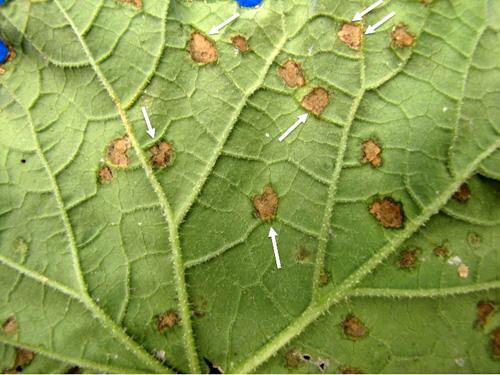
Figure 6. Upon close examination of some spots on the underside of leaves, it can be seen that major veins in the leaf form a barrier to expansion of downy mildew in this type of cucurbit as in others (see arrows). The downy mildew pathogen does not produce many spores on cantaloupe leaves, thus the dark fuzzy (downy) fungal growth that commonly occurs on the underside of spots on cucumber and butternut squash leaves will not develop on these spots. Image provided by Dr. Margaret McGrath, Vegetable Pathology, Cornell University.
